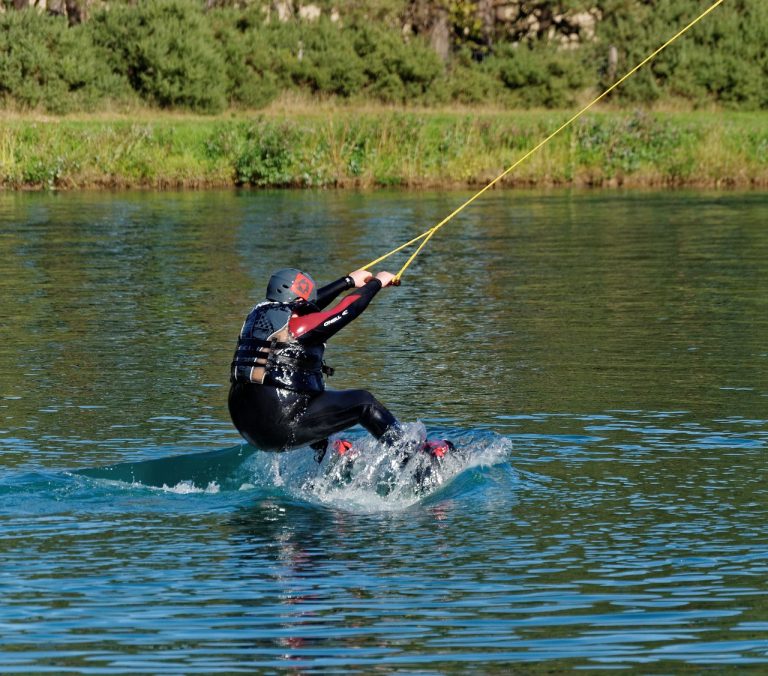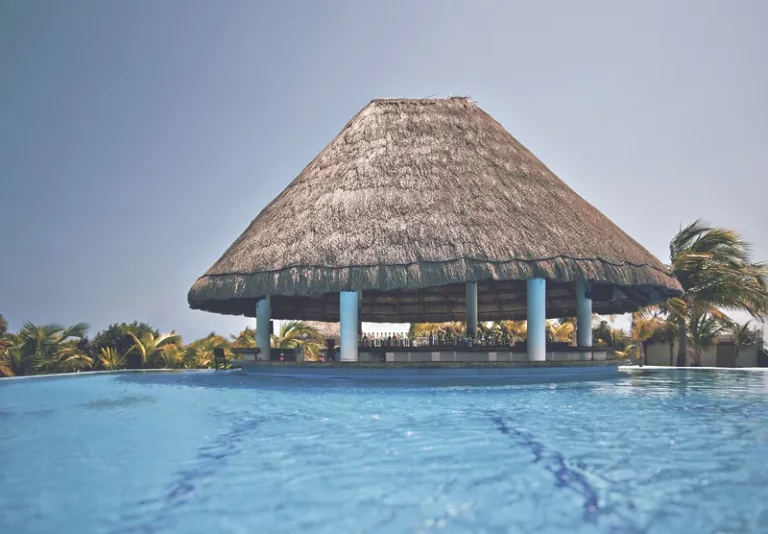General Rules of Extreme Canoe Slalom
As you prepare to tackle the extreme canoe slalom course, you'll need to understand the intricate rules and regulations that govern this high-stakes, high-reward sport. You'll navigate a meticulously designed course with strategically placed gates, water features, and obstacles that demand agility, strength, and precision. You'll need to meet age and experience requirements, demonstrate a solid foundation in canoeing skills, and meet rigorous physical and medical standards. As you start your journey, you'll need to understand the racing procedures, gate navigation, and clearance rules. But that's just the beginning – there's more to master as you take on the challenges of extreme canoe slalom.
Course Design and Layout

As you prepare to tackle the extreme canoe slalom course, you must realize that the layout is meticulously designed to push athletes to their limits, featuring a series of gates that are strategically placed to test agility, strength, and precision. The course is an intricate puzzle, with each element carefully crafted to challenge you physically and mentally. Water features, such as rapids, eddies, and holes, are expertly incorporated to amplify the difficulty level. The obstacle placement is equally vital, with gates positioned to demand precise paddling, quick reflexes, and calculated risk-taking. You'll encounter varying gate types, including downstream, upstream, and offset gates, each requiring unique techniques and adaptations. The course designers have carefully balanced the layout to guarantee a thrilling ride that demands your full attention and skill. As you navigate the course, you'll need to stay focused, adaptable, and in control to overcome the obstacles and emerge victorious.
Safety Equipment Requirements
Safety Equipment Requirements
You'll need to wear a helmet that meets the International Canoe Federation's (ICF) safety standards to protect your head from impact and penetration injuries. This is non-negotiable in extreme canoe slalom, where the risk of head trauma is high. Your helmet must conform to the ICF's Helmet Standards, which guarantee it can withstand the forces generated by a canoe traveling at high speeds.
In addition to a helmet, you'll need to wear a properly fitting Life Jacket that's specifically designed for canoeing. This will keep you afloat in case you're thrown from your canoe or swim to shore. Your Life Jacket should be Coast Guard-approved and in good condition, with no signs of wear or damage.
Paddler Eligibility Criteria

As you prepare to tackle the extreme canoe slalom course, you'll need to verify that you meet the eligibility criteria. That means you'll need to satisfy the age and experience requirements, which are in place to guarantee you've got the necessary skills to navigate the challenging waters. Additionally, you'll need to meet the physical and medical standards, which will be discussed in more detail below.
Age and Experience
To be eligible to participate in extreme canoe slalom, you must meet specific age and experience requirements, which are essential in ensuring you're adequately prepared for the physically demanding and technically challenging nature of this sport. As an aspiring competitor, you'll need to demonstrate a strong foundation in canoeing skills, honed through dedicated practice and training. Youth development programs can provide a solid starting point, where you can develop fundamental skills and build a strong foundation.
As you progress, you'll need to demonstrate skill mastery in various aspects of canoeing, including navigation, maneuverability, and adaptability. This expertise will be vital in tackling the complex and unpredictable nature of extreme canoe slalom courses. Your experience should reflect a gradual progression from beginner to advanced levels, with a focus on refining your techniques and strategies. By meeting these age and experience requirements, you'll be well-equipped to tackle the challenges of extreme canoe slalom and tap your full potential in this exhilarating sport.
Physical and Medical
You'll need to meet rigorous physical and medical standards to guarantee you're fit for the intense demands of extreme canoe slalom. As a paddler, you'll be required to possess a high level of cardiovascular endurance to withstand the physical strain of traversing through challenging whitewater courses. Your body must be able to adapt to rapid changes in heart rate, blood pressure, and oxygen consumption.
In addition to cardiovascular endurance, you'll need to demonstrate musculoskeletal resilience to prevent injuries. Extreme canoe slalom involves rapid and intense movements, which can put excessive stress on your muscles, tendons, and joints. You'll need to have a strong core, flexible limbs, and robust connective tissues to withstand the forces generated by the turbulent water.
To guarantee your safety and the safety of others, you'll undergo a thorough medical evaluation to identify any potential health risks. This includes screening for pre-existing conditions, such as cardiovascular disease, that could increase your risk of injury or fatality during competition. By meeting these physical and medical standards, you'll be able to push yourself to new heights and experience the thrill of extreme canoe slalom with confidence.
Start and Finish Procedures
Your canoe is positioned at the starting gate, ready to launch into the turbulent waters, with a designated starter giving you a 5-second countdown before blasting off into the extreme canoe slalom course. As you prepare to launch, you'll need to weigh your racing strategy, taking into account the course layout, water levels, and your own strengths and weaknesses. Once you receive the 'go' signal, you'll push off from the starting gate and begin your journey through the challenging course.
As you approach the finish line, make sure to maintain your speed and control, as the finish gates are closely monitored by Course Marshals who will be tracking your time and any penalties incurred. Vital to stay focused and maintain your composure, even as you cross the finish line, as any mistakes can result in penalties or disqualification. Remember, the start and finish procedures are vital components of your overall racing strategy, and a smooth execution can make all the difference in your final standings.
Gate Navigation Rules

As you navigate the extreme canoe slalom course, you'll need to master the intricacies of gate navigation. You'll need to understand how gates are positioned to challenge your skills, verify you've got the necessary clearance to pass under them, and prioritize your passage when sharing the course with others. In this section, we'll break down the essential rules governing gate navigation, so you can focus on conquering the course.
Gate Positioning
As you navigate the canoe slalom course, you'll face gates positioned to challenge your skills. In a canoe slalom course, gates are positioned to challenge paddlers' navigation skills, with upstream gates placed at an angle that requires a ferry glide or a draw stroke to exit, and downstream gates positioned to test a paddler's ability to maintain speed and direction.
Gate angles are critical, as they dictate the approach and exit strategies you'll use. Upstream gates typically have a 30- to 45-degree angle, requiring precise control to exit smoothly. Downstream gates, on the other hand, have a more subtle angle, around 10 to 20 degrees, which demands you maintain speed while making precise turns.
Water flow also plays a pivotal role in gate positioning. The current can either aid or hinder your progress, depending on the gate's placement. You must adapt to the water flow to successfully navigate the gates and maintain your speed and direction. By mastering gate positioning, you'll be well on your way to dominating the canoe slalom course.
Gate Height Clearance
To successfully navigate the canoe slalom course, you'll need to master the art of gate height clearance, which requires precise judgment of your canoe's vertical position in relation to the gate's upper wire. This vital aspect of gate navigation demands attention to water levels, as subtle changes can greatly impact your clearance. Be prepared to adapt to varying water levels, which can affect the gate's height and, consequently, your canoe's clearance.
When approaching a gate, assess the water level and adjust your paddling accordingly. Clearance variations can be considerable, so developing a keen sense of spatial awareness is vital. Practice will help you develop the skills to accurately judge the distance between your canoe and the gate's upper wire. Remember, a mere inch can make all the difference between a successful passage and a penalty-inducing touch.
To excel in extreme canoe slalom, you must be able to expertly navigate gates with precision and confidence. By honing your gate height clearance skills, you'll be well on your way to dominating the course and achieving liberation on the water.
Passage Priority Rules
You'll need to understand the passage priority rules, which dictate the order in which canoes paddle through gates, to avoid penalties and guarantee a smooth, efficient ride. These rules facilitate that river traffic flows seamlessly, allowing you to focus on your technique and speed. The basic principle is simple: canoes already in the gate have priority over those approaching. If you're approaching a gate and another canoe is already paddling through, you'll need to yield and wait your turn. This is where lane etiquette comes into play. Always be aware of your surroundings and maintain a safe distance from other canoes to avoid collisions. When two or more canoes arrive at a gate simultaneously, the canoe on the downstream side has priority. Remember, understanding and respecting these rules is vital for a safe and successful run. By following these guidelines, you'll be able to paddle the course with confidence and precision, enjoying the thrill of extreme canoe slalom.
Time and Penalty Systems
In competitive canoe slalom, your time and penalty score are calculated simultaneously, with each gate touch or miss incurring a time penalty that's added to your raw time. This means you'll need to navigate the course efficiently and accurately to avoid adding seconds to your overall time. Timekeeping errors can be costly, so vital is understanding how penalties are calculated.
Penalty calculations involve adding two seconds for each gate touch and 50 seconds for each missed gate. These penalties are added to your raw time, which is the time it takes you to complete the course without any errors. If you touch a gate, you'll incur a two-second penalty; if you miss a gate, it's a 50-second penalty. These penalties can quickly add up, so precision and control are vital in extreme canoe slalom. By mastering the course and minimizing penalties, you'll be well on your way to achieving a competitive time and realizing your full potential in this exhilarating sport.
Obstruction and Interference

While tackling the extreme canoe slalom course, it's essential you're aware of obstruction and interference rules, as failing to comply can result in penalties or even disqualification. You must verify you're not obstructing other paddlers or interfering with their progress, as this can lead to penalties or even disqualification. Course Marshals are responsible for monitoring the course and identifying any instances of obstruction or interference.
If you're deemed to have obstructed or interfered with another paddler, you'll be penalized accordingly. Safety Nets are in place to prevent collisions and protect paddlers, but it's still your responsibility to maintain a safe distance from other competitors. Remember, it's your duty to be aware of your surroundings and adjust your pace accordingly to avoid obstruction or interference. Failure to do so can result in penalties, which can notably impact your overall performance. Stay focused, stay aware, and prioritize a clean and respectful competition.
Protest and Appeal Process
One key aspect of extreme canoe slalom competitions is understanding the protest and appeal process, which allows you to formally dispute decisions made by Course Marshals or the Race Committee. As a competitor, you must know your rights and procedures when disputing a decision that affects your performance. When filing a protest, you'll need to provide clear evidence supporting your claim, and the Race Committee will review your case.
Impartiality is fundamental in this process, guaranteeing that decisions are made without bias. The Judge's ruling will be based on the evidence presented, and their decision is final. To maintain consistency in their rulings, the Race Committee will maintain a record of all protests and appeals, allowing them to reference previous cases and maintain uniformity in their decisions.
Frequently Asked Questions
Can I Participate in Extreme Canoe Slalom With a Non-Standard Canoe?
You're wondering if your custom craft with a modified hull can cut it in extreme canoe slalom. Technically, you're allowed to participate, but be prepared for scrutiny, as officials will inspect your ride to verify it's safe and fair.
Are There Any Age Restrictions for Extreme Canoe Slalom Competitions?
You're wondering about age restrictions in extreme canoe slalom competitions. Rest assured, you'll find opportunities across the board: Youth Development programs for under-18s, and Senior Categories for 35+ year-olds, ensuring everyone can participate and thrive.
Can I Wear My Own Personal Safety Gear Instead of Provided Equipment?
Like Odysseus traversing treacherous waters, you're wise to question gear autonomy. However, for your safety, all personal equipment must pass rigorous Gear Inspection, ensuring it meets stringent Safety Standards, so don't assume your gear's approval without clearance.
How Do I Choose Which Gate to Take in a Multiple-Gate Configuration?
When faced with multiple gates, you'll need to develop a Gate Strategy, considering factors like river flow and your Angle Approach to choose the best gate, ensuring a smooth, high-speed run that taps your full potential.
Are There Any Specific Rules for Competing With a Disability?
As you enter the world of competitive canoeing, you'll find that adaptive paddling is a game-changer for athletes with disabilities, with rigorous Disability Classification systems ensuring a level playing field for all.






